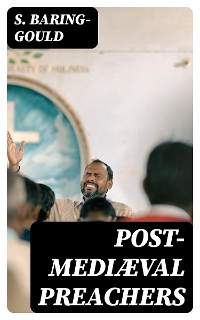Post-Mediæval Preachers
S. Baring-Gould
Sachbuch / Christliche Religionen
Beschreibung
In "Post-Mediæval Preachers," S. Baring-Gould explores the evolution of sermon literature in the transitional period between the medieval and modern eras. The book paints a vivid portrait of the diverse voices that emerged during this era, showcasing the stylistic shifts in preaching and its socio-religious impact. Baring-Gould's scholarly approach unfolds through meticulous analysis of texts, incorporating a blend of historical context and literary critique that enriches the reader's understanding of the preachers' roles in shaping public discourse and moral thought. The eloquent prose and rich historical detail invite readers into a forgotten realm of religious fervor and oratory masterpieces. S. Baring-Gould, a prolific author and theologian of the late 19th and early 20th centuries, was deeply engaged with the religious milieu of his time. His extensive studies in folklore and ecclesiastical history, coupled with his own experiences as an Anglican priest, equipped him with a unique perspective on the dynamics between faith, culture, and communication. These insights manifest in "Post-Mediæval Preachers," where he weaves together his scholarly expertise with a deep appreciation for the significance of preaching in congregational life. For readers interested in the intersections of history, literature, and theology, Baring-Gould's "Post-Mediæval Preachers" is an essential scholarly work that not only illuminates a pivotal era in religious history but also offers timeless reflections on the power of rhetoric and moral persuasion. It is highly recommended for scholars, students, and anyone intrigued by the historical underpinnings of modern religious discourse.
Kundenbewertungen
primary source examination, teaching impact study, clergy social influence, meticulous narrative style, Victorian era theology, post-Reformation preaching, spirituality in society, engaging scholarly exploration, historical religious controversies, religious history analysis



















































